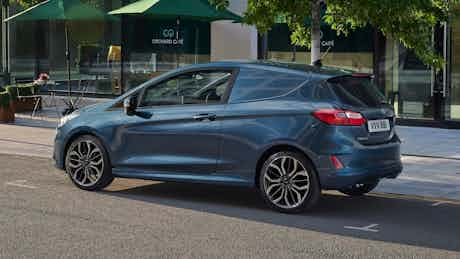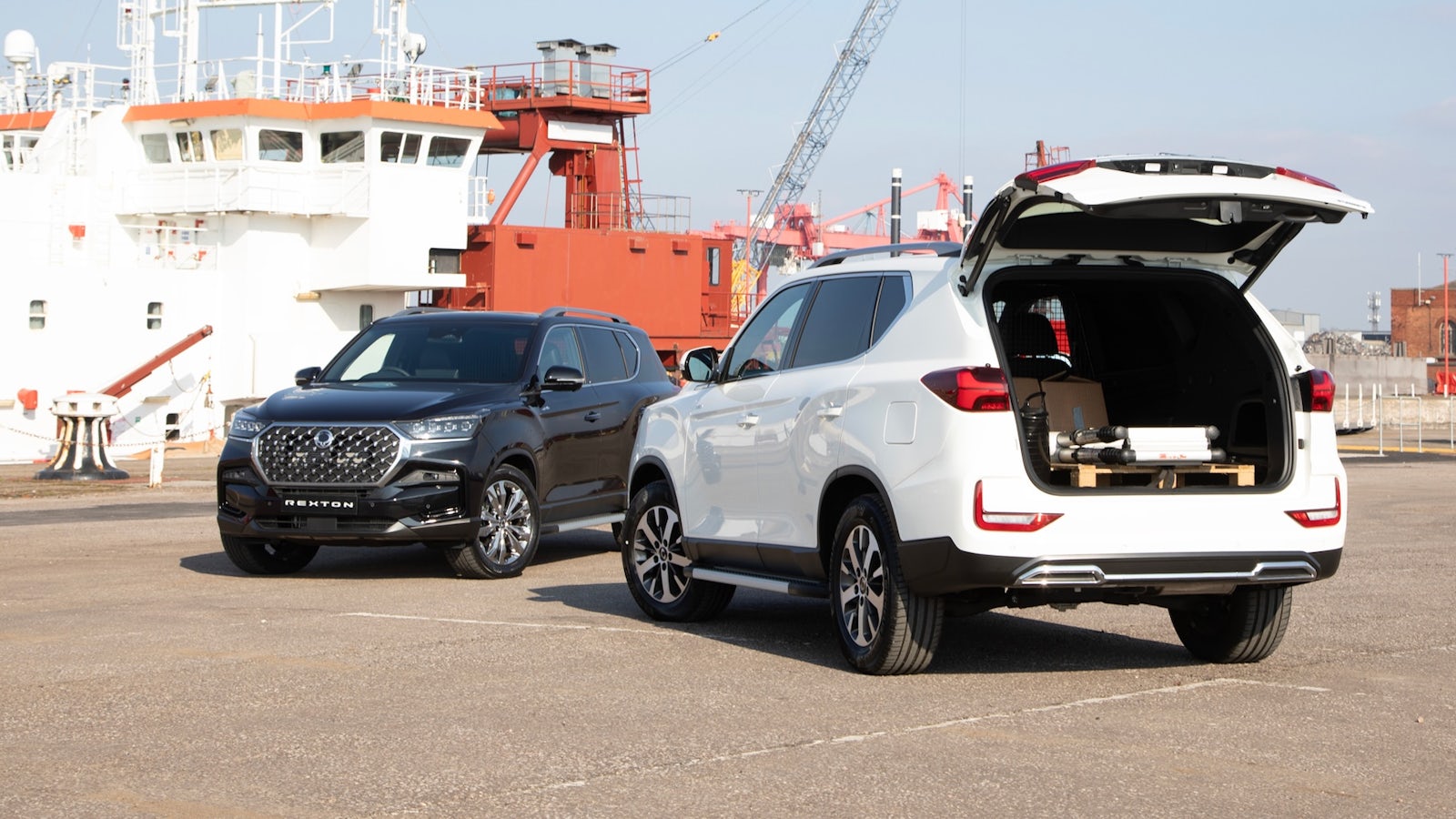What is a car-derived van?
October 10, 2025 by Tom Wiltshire

Car-derived vans are pretty much what they say on the tin – they’re cars, but ones which have been converted into commercial vehicles by removing their back seats and adding a flat load floor.
Don’t confuse a car-derived van with a small van – vehicles like the Citroen Berlingo might share many components with passenger cars such as engines, gearboxes or interior fittings, but they’re still their own thing. A car-derived van is much more similar to the passenger vehicle on which it’s based – to the point where you probably wouldn’t be able to tell the difference unless you knew what to look for.
But what are the pros and cons of a car-derived van – and should you buy one? This guide will answer that for you, as well as help you find out what a car-derived van actually means, whether you can drive one, and how fast they can go.
What is a car-derived van?
A car-derived van is a vehicle which starts out life as a proper, standard passenger car. It’s then converted into a van, with a few points which have to be correct before they can be officially classified.

A car-derived van:
Weighs no more than 2,000kg fully laden
Is based on a car design
Has no rear seats, seat belts, or mountings
Has a floor panel in the rear of the vehicle
Has no transparent side windows into the load area
In practice, then, a car-derived van has had the rear seats and associated hardware removed and the rear windows blanked out with opaque panels. The manufacturer then fits a structure for a flat floor in the rear, and usually a mesh bulkhead. Other changes are minimal – car-derived vans retain their styling features, the front seats and dashboard are unchanged, and the engines are the same as in their passenger car equivalents – though there may be a smaller range to pick from.
Car-derived vans may be based on hatchbacks, estate cars or SUVs – the latter may also be called a commercial 4×4. Examples of each include the (departed) Ford Fiesta Van, the Toyota Corolla Commercial, or the KGM Rexton Commercial.
What are the common uses of car-derived vans?
Car-derived vans aren’t ideal as replacements for full-sized vans if you regularly carry large loads, as they have smaller cargo areas and limited payloads. However, being based on a passenger car, they’re ideal if you want a commercial vehicle that drives just like a car.
Car-derived vans are thus ideal if you regularly drive long distances, especially as they have the same speed limits as regular cars so you’ll get to your destination quicker.

They can also look very smart, especially if professionally signwritten. They’re therefore ideal for businesses that want to advertise on something other than a blocky panel van.
Commercial 4x4s in particular retain the off-road ability of their passenger car counterparts, so they also have a niche in those who need a big load area, regularly go off-road, and don’t want a pickup truck. This is all the more poignant since the rates of pickup truck company car tax were raised in 2025.
What are the speed limits for car-derived vans?
Car-derived vans have a real advantage over regular vans in that they retain the speed limits of a regular passenger car. This means they can do 60mph on single carriageway roads, where regular vans are limited to 50mph, and 70mph on dual carriageways, where standard vans can only do 60mph.
Dual-purpose vehicles, such as some pickup trucks, share the speed limits of a car-derived van, but due to the weight of modern double-cab trucks precious few of them actually qualify.
| Light commercial vehicle speed limit | Dual-purpose vehicle speed limit | Car-derived van speed limit | |
|---|---|---|---|
| Single carriageway | 50mph | 60mph | 60mph |
| Dual carriageway | 60mph | 70mph | 70mph |
| Motorway | 70mph | 70mph | 70mph |
A car-derived van is therefore ideal for long-distance drivers as it can do regular car speed limits.

Pros and cons of a car-derived van
Pro: a car-derived van drives like a car
It might seem obvious, but a car-derived van is mechanically identical to a regular passenger car. Something like a Toyota Corolla Commercial has many advantages over even the best small vans – it’s more comfortable, the driving position is more natural, it’s more manoeuvrable around town, and it has a smoother engine.
Con: a car-derived van isn’t as heavy-duty as a van
Most vans, even small ones, have service intervals of around 20,000 miles – double those of most cars, including car-derived vans. A proper van also has a more hardwearing interior, and an exterior designed to be more easily and affordably repairable in the event of a quick ding.
Pro: car-derived vans are cheaper to run

With more economical engines and (usually) sleeker, more aerodynamic bodies, a car-derived van will usually have better fuel economy than the equivalent panel van. The best example of this is again the Toyota Corolla Commercial, which has a hybrid engine capable of well over 60mpg. But a commercial 4×4 such as a KGM Rexton Commercial or Land Rover Defender Hard Top will still return better fuel economy than a large, 4×4 van or pickup truck.
Con: car-derived vans can’t carry as much
With their higher floors and lower rooflines, car-derived vans have smaller load areas by far than even the most compact panel vans. They’re also not designed to carry anywhere near as much weight. While even a small panel van like the Citroen Berlingo can carry close to or even over 1,000kg of payload, in most car-derived vans that figure is closer to 500kg.
Pro: easier to drive in the city
Compact dimensions, good visibility, and great manoeuvrability means a car-derived van is as easy to drive round town as any car. They’re also low enough to fit into multi-storey car parks or under height restrictions.
Con: not as versatile
If your van needs to be fitted out with specialist racking, or any other tools of your trade, you’ll find that much more difficult to do in a car-derived van. There are limited options for conversions, refrigeration, and even signwriting can be tricky without as many flat panels to work with.
Car-derived van FAQs
Is a Ford Transit Courier a car-derived van?
While the Ford Transit Courier shares many things with Ford passenger cars – the Fiesta or the Puma, depending on which generation you’re looking at – it is not a car-derived van. The only car-derived Ford van that’s been sold in recent years was the Fiesta van (2018 – 2022).
Is a VW Caddy a car-derived van?
The Volkswagen Caddy is not a car-derived van, though it does share many mechanical bits with the Volkswagen Golf. It’s identical to the Ford Transit Custom, too, but both are proper LCVs rather than car-derived vans.
How fast can a car-derived van go?
Car-derived vans share their speed limits with regular passenger cars – so they can travel up to 60mph on single carriageway roads, and up to 70mph on dual carriageways, 10mph faster than panel vans.
Time for a new van? Carwow!
Looking for a new set of wheels? With Carwow you can sell your van quickly and for a fair price – as well as find great offers on your next one. Whether you’re looking to buy a van brand new or are after something used, Carwow is your one stop shop for a new van.
Click here to follow us on WhatsApp, where you can keep up-to-date with all the latest news, reviews, advice guides and videos.















